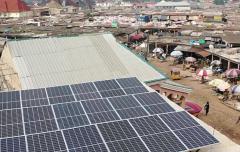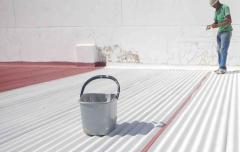“In 2018, we need to move from talk to action”: Partner spotlight interview with Jürgen Fischer, President of Danfoss Cooling
In an interview with Jürgen Fischer, President of Danfoss Cooling, we discuss how Danfoss is supporting Sustainable Development Goal 7, the new Cooling for All initiative and what they’re looking at in 2018.
Tell us about Danfoss – what are your key areas of expertise?
Danfoss is a family-owned company with a long tradition in energy efficient technologies. Today, we have more than 26,000 employees and customers in more than 100 countries. Still the Danfoss culture is special. We are headquartered in the Southern part of Denmark, just where our founder made his first invention in his parent’s farmhouse. You could say that his foresight and innovative thinking was very early on based on sustainable development – of his company and the community around the business. Since 1933, our mission is related to doing more with less. Today, we work on solutions for sustainable infrastructure, heating and cooling, climate, food and energy. I am heading the Cooling segment, where we want to keep people, products and the planet cool.
Take the food cold chain for example, one of society’s biggest paradoxes, where one third of all food produced is either lost or wasted while one in nine people goes to bed hungry. A minute of difference in temperature can determine whether a truckload of food will be sold or go to waste. Our products ensure that temperatures remain precisely where they should be along the way from farm to fork. In India, we are working with local communities to improve knowledge and expertise around when to harvest and how to manage a cold chain to improve the lifespan of for instance bananas, which then again increases farmer’s income.
How does Danfoss support increasing energy access?
At Danfoss, one of our strengths is to improve the energy efficiency of whole systems, and like this making it cheaper and more feasible to run products also on less reliable or decentral energy grids. We just announced a planned joint venture with SMA, a solar technology company, where we are working actively on integrating supermarkets into the energy system to provide flexibility and hence access in other parts of the energy system. This will help to stabilize the decentral energy system of the future.
Another example is the water sector. According to the IEA World Energy Outlook 2016, the water sector is the largest item on a municipality’s electricity bill, accounting for up to 30 – 50%. But in fact, we are working on turning the water sector energy neutral – and the technologies to do that exist already. With a combination of variable speed drives, energy efficiency and grid connection, the water sector can become energy-neutral, with Denmark being expected to achieve this goal within a few years.
From our perspective, access to energy needs to be based on enabling fluctuating renewable energy to become a normal part of the energy system by using best available technology with an innovative spin. If we are to seize the potential of energy efficiency to enable access, I believe collaboration is absolutely essential. This is what we are committed to doing with Sustainable Energy for All (SEforALL). Through energy efficiency, we can give more people access to energy.
Why is energy efficiency a crucial part in accelerating SDG7 action?
The goal is clear. With SDG 7 we focus on energy. But it is really about giving access to sustainable energy to the 1.1 billion people who are looking forward to being able to cook without having to spend hours collecting firewood, study at night, or keep life-saving medicine cool.
The good news is that recent developments of decentral energy systems, incl. energy storage, reduced cost of especially solar and off-grid solutions are about to improve the situation for these people in a big way and give them a new standard of life.
However, these exciting changes come at a cost, if we fail to take the proper steps and make energy efficiency the basis for energy access. If we are to give 1.1 billion people access to energy as is foreseen in SDG 7, we need to ensure that these new consumers of energy are able to use it as efficiently as possible.
What will your partnership with SEforALL focus on?
Currently, the annual rate of energy efficiency improvements is 1.7 percent. Yet this is still way behind the annual 2.6 percent needed between 2010 and 2030 to meet the SEforALL objective of doubling the rate of improvement in energy efficiency. This is the core of our partnership with SEforALL.
Since 2013, we have been working with SEforALL on several initiatives around buildings and district energy. And last year, I was honored to join the new Cooling for All initiative launched by SEforALL and K-CEP last year – which will create a roadmap for access to sustainable cooling. We provide mainly technical knowledge for concrete energy efficiency projects and help spreading awareness around the initiatives in our industries to make sure it is always on the top of the agenda.
We are fully convinced that energy access is a key enabler for development, and hence for market development. Sustainable energy for all, is therefore not only a must do from a societal point of view, but also provides huge opportunities for sustainable companies. As a technology company with expertise in energy efficiency, we believe that we must share our knowledge with local and national governments on how to develop and build a vision for a sustainable future.
You’re also working with SEforALL on our new Cooling for All initiative. Why is sustainable cooling so important?
Imagine this – you live in a hot and humid climate and you get access to energy, what would be the first thing you buy? Personally, I would buy a refrigerator or an air conditioner. And I am not alone, the demand for these products is predicted to skyrocket by 625% by 2050.
Unfortunately, cooling in developing countries is often supplied through older, less-efficient versions of these appliances, as they are cheaper and more readily available. The worrisome side effect will be a sharp increase in global warming. It's forecast that cooling worldwide will create 1.5 billion tons of CO2 per year (over the next 15 years) due to an increase in electricity demand—an amount equal to three times the current energy emissions of Brazil.
This could easily turn into a vicious circle as we will face even more global warming, through global cooling. We would not be able to meet our climate ambitions as outlined in the Paris Agreement. That is why we joined the Cooling for All initiative to support spelling out the challenges and opportunities connected to this growth of access to energy and therefore cooling. It is important that the HVAC-R industry has a seat at the table, to show what can be done with best-available technologies already today and where we need innovation to take up in the long run.
2018 is a busy year for sustainable energy. What is Danfoss looking forward to?
In 2018, we need to move from talk to action. We have all we need to move forward, we have a global agreement, we have the right technology. In 2018, we need to focus on implementation and scale of these projects. From our end, a starting point will be a series of events this year – called Engineering Tomorrow Talks #ETtalks – where Danfoss together with key partners such as SEforALL engages the very people that bring about change in real projects – the ones that focus on action – our developers, architects, construction engineers and city planners. And of course, I will attend the SEforALL Forum – being held in Lisbon on May 2nd and 3rd - to talk a bit. I look forward to seeing you there.
Jürgen Fischer is President of Danfoss Cooling. Follow him on Twitter at @jfi1963



